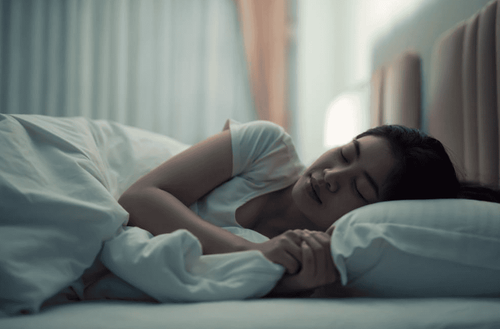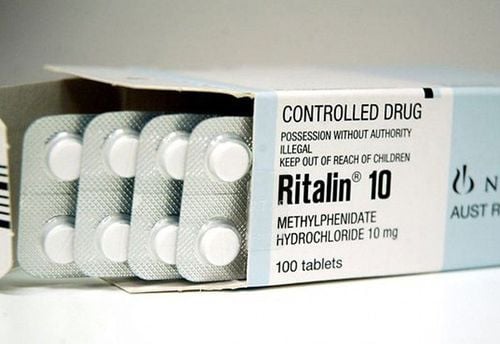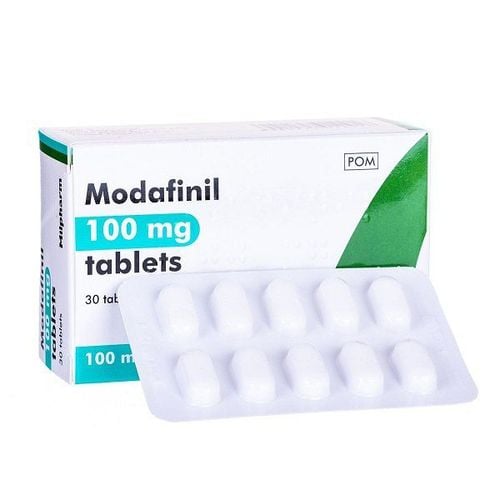This is an automatically translated article.
Narcolepsy can cause challenges to everyday life: in addition to sleepiness, people with narcolepsy can experience mental coma, poor memory, and hallucinations. Social life can be disrupted by episodes of somnolence and other symptoms. How to live with and balance this symptom. This article will provide more information to help prevent this.
1. Narcolepsy
Narcolepsy - a chronic neurological disorder that affects the brain's ability to control the sleep-wake cycle. People with narcolepsy may feel rested upon waking, but then feel very sleepy throughout the day. Many people with narcolepsy also experience irregular and disrupted sleep, which can be related to frequent awakenings during the night.
People with narcolepsy can have problems with daily activities, for example, they may accidentally fall asleep even while they are doing activities like driving, eating or talking, or sleeping Daydreaming or sitting anywhere can sleep. Other symptoms of narcolepsy may include sudden muscle weakness while awake that causes a person to limp or unable to move (dyskinesia), vivid dream-like or hallucinations, and numbness total paralysis just before falling asleep or shortly after waking up (sleep paralysis).
During a normal sleep cycle, a person can go into rapid eye movement (REM) sleep after the first 60 to 90 minutes. Dreams occur during REM sleep, and the brain holds onto soft muscles during this sleep phase, preventing people from realizing their dreams. People with narcolepsy often fall asleep quickly, within 15 minutes of falling asleep. In addition, muscle weakness or dream activity of REM rapid eye movement sleep may or may not be present during sleep. Narcolepsy, if left undiagnosed or untreated, can interfere with psychological, social, and cognitive development and function and can inhibit activities of daily living such as school, work, and life. and social.
2. Types of narcolepsy
There are two main types of narcolepsy:
Type 1 narcolepsy (formerly known as narcolepsy with transient paralysis). This diagnosis is based on whether the individual has low brain hormone (hypocretin) levels or reports difficulty falling asleep and excessive daytime sleepiness on a special nap test. Type 2 narcolepsy (formerly known as narcolepsy without transient paralysis). People with this condition often experience excessive daytime sleepiness but do not usually experience emotional-triggered muscle weakness. They also often have less severe symptoms and have normal levels of the brain hormone hypocretin. Secondary narcolepsy can be caused by injury to the hypothalamus, an area deep in the brain that helps regulate sleep. In addition to experiencing the typical symptoms of narcolepsy, individuals may also have severe neurological problems and sleep for long periods of time (more than 10 hours) each night.

Ngủ ngày li bì có thể ảnh hưởng tới chất lượng cuộc sống của người bệnh
3. Diagnosing narcolepsy
A physical examination and detailed medical history are essential for the diagnosis and treatment of narcolepsy. Individuals may be asked by their doctor to keep a sleep diary that records sleep duration and symptoms for a period of one to two weeks. Although there is no single major symptom specific to narcolepsy, insomnia is considered the most specific and occurs almost exclusively in other conditions.
A physical exam can rule out or identify other neurological conditions that may be causing the symptoms of narcolepsy. Two specialized tests, which can be done at a sleep disorder clinic, help diagnose narcolepsy:
Polysomnogram (PSG or sleep study). The PSG is an overnight recording of brain and muscle activity, breathing, and eye movements. PSG can help reveal whether REM sleep occurs early in the sleep cycle and whether an individual's symptoms stem from another condition such as sleep apnea. Multiple sleep latency test (MSLT). MSLT assesses daytime sleepiness by measuring how quickly a person falls asleep and whether or not they enter REM sleep. On the day after the match against PSG, an individual was asked to take 5 naps 2 hours apart throughout the day. If a person sleeps on average less than 8 minutes out of five naps, this indicates excessive daytime sleepiness. However, people with narcolepsy also have REM sleep that begins unusually quickly. If REM sleep occurs within 15 minutes at least twice out of five naps and sleep studies the night before, this may be an abnormality caused by narcolepsy. Sometimes, it can be helpful to measure the level of hypocretin in the fluid that surrounds the brain and spinal cord. To do this test, your doctor will draw a sample of your cerebrospinal fluid using a lumbar puncture (also called a spinal tap) and measure your hypocretin-1 level. In the absence of other serious medical conditions, low hypocretin-1 levels almost certainly indicate type 1 narcolepsy.
4. Some methods to improve and balance with narcolepsy
How to cure narcolepsy? Although there is no cure for narcolepsy, some symptoms can be treated with medication and lifestyle changes. With transient paralysis, the loss of hypocretin is said to be irreversible and lifelong. Most people who take medication can control excessive daytime sleepiness and trouble sleeping.
Drug use:
Modafinil. The initial line of treatment usually uses a central nervous system stimulant such as modafinil. Modafinil is often prescribed first because it is less addictive and has fewer side effects than older stimulants. For most people, these medications are usually effective in reducing daytime sleepiness and improving alertness. Amphetamine-type stimulant. In cases where modafinil is not effective, your doctor may prescribe an amphetamine-type stimulant such as methylphenidate to reduce EDS. However, these medications must be carefully monitored because they can have side effects such as irritability and nervousness, tremors, heart rhythm disturbances, and sleep disruptions at night. In addition, healthcare professionals should be careful when prescribing these drugs and people should be careful when using them because the potential for abuse is very high with any amphetamine. Antidepressants. Two classes of antidepressants have been shown to be effective in the management of cataplexy in many people: tricyclics (including imipramine, desipramine, clomipramine, and protriptyline) and selective serotonin and noradrenergic reuptake inhibitors. including venlafaxine, fluoxetine, and atomoxetine). In general, antidepressants produce fewer side effects than amphetamines. However, annoying side effects still occur in some people, including impotence, high blood pressure, and irregular heartbeat. Sodium oxybate. Sodium oxybate (also known as gamma hydroxybutyrate or GHB) has been approved by the U.S. Food and Drug Administration to treat daytime sleepiness and excessive sleepiness in people with narcolepsy. It is a strong sedative that must be taken twice a night. Due to safety concerns associated with the use of this drug, the distribution of sodium oxybate is tightly restricted.

Chữa ngủ rũ thế nào thì bạn có thể uống thuốc theo chỉ định của bác sĩ chuyên khoa
What to do with narcolepsy? Not everyone with narcolepsy is able to consistently maintain a perfectly normal state of consciousness using currently available medications. Drug treatment should be accompanied by various lifestyle changes. The following strategies may be helpful:
Take a short nap. Many individuals take regularly scheduled naps at times when they tend to feel the most sleepy. Maintain a regular sleep schedule. Going to bed and waking up at the same time every day, including on weekends, can help people sleep better. Avoid caffeine or alcohol before bed. Individuals should avoid alcohol and caffeine for several hours before bedtime. Avoid smoking, especially at night. Daily exercise. Exercising for at least 20 minutes a day at least 4 or 5 hours before bed also improves sleep quality and may help people with narcolepsy avoid excessive weight gain. Avoid large and heavy meals right before bedtime. Eating very close to bedtime can make it harder to fall asleep. Relax before going to bed. Relaxing activities like taking a warm bath before bed can help promote sleepiness. At the same time, ensure a cool and comfortable sleeping space.
Please dial HOTLINE for more information or register for an appointment HERE. Download MyVinmec app to make appointments faster and to manage your bookings easily.
References: webmd.com, sleepeducation.org












